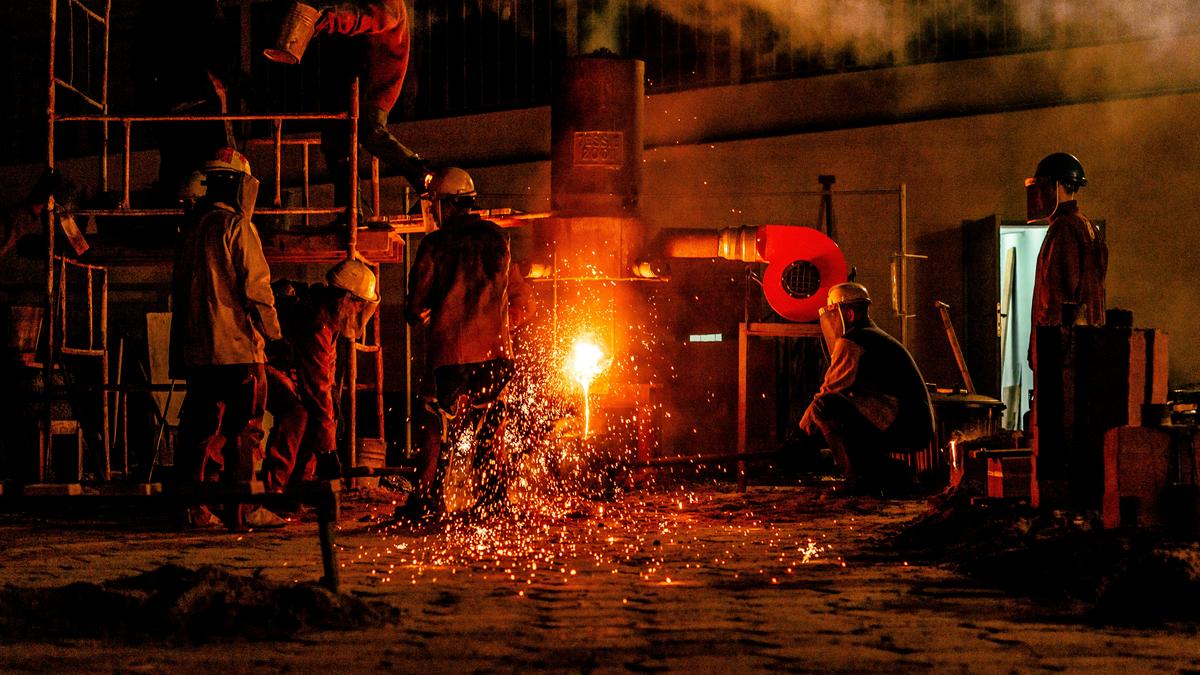
What is heat? How does it animate engines and global warming? | Explained Premium
The Hindu
Understanding the microscopic and macroscopic characteristics of heat has been crucial for metallurgy and materials science, mining, refineries, a large variety of chemical reactions, semiconductor electronics, meteorology, and transportation, among other areas.
Heat is animus. It was there at the birth of the universe, and its death will be the universe’s death. It is impossible to overstate its importance — both throughout human history and across modern technologies. The innovation of steam-powered pumps and engines in the 17th and 18th centuries, reaching the first of many summits in James Watt’s setup in 1764, precipitated the first Industrial Revolution. Today, global warming is forcing us to deliberate on the roles heat plays in our lives.
In the microscope scheme, an object’s temperature is the average kinetic energy of its constituent particles. When two bodies at different temperatures come in contact, the temperature of the cooler one will rise and vice versa; heat here is the amount of thermal energy the bodies have exchanged to effect this temperature change.
Macroscopically, heat is dealt with as a form of energy with specific characteristics, understood using the tools of thermodynamics and statistical mechanics, among other fields.
A medium can absorb heat at one location and dissipate it at another — a possibility that forms the basis of many modern technologies, including thermal and nuclear power plants and air conditioning. Engineers have also developed ways to convert heat into mechanical energy, paving the way for machines like the internal combustion engine.
Perhaps the best way to understand heat is through an application. Let’s start with two examples: internal combustion engines (ICEs) and thermal power plants.
An ICE converts heat to (mechanical) work, and in this sense is a practical application of a theoretical entity called the Carnot cycle. This cycle describes the maximum thermodynamic efficiency an engine converting heat to work can have. To begin with, the engine has four components: a hot reservoir (a system with more heat), a cold reservoir (a system with less heat), an ideal gas in between (through which heat moves from the hot to the cold reservoirs), and a piston adjacent to the ideal gas. Each cycle has four steps.
In the first step (isothermal expansion), the ideal gas is insulated from the cold reservoir and is exposed to the hot reservoir. Heat moves from the hot reservoir — generated by, say, the combustion of petrol — to the ideal gas. The gas particles are heated up and the gas expands, pushing on the piston. In the second step (isentropic expansion), the gas continues to expand even as it is insulated from both reservoirs, pushing the piston. Its temperature doesn’t change due to the insulation but it loses some energy against the piston. The expansion causes it to cool down as well. In these two steps, the piston has done work on its surroundings.

KTM has reinforced its middleweight ADV portfolio in India with the introduction of two distinct offerings — the updated KTM 390 Adventure X and the globally-spec KTM 390 Adventure Enduro R. While the former caters to long-distance touring enthusiasts now seeking more value and tech, the latter is purpose-built for riders who demand uncompromised off-road performance, rooted in Dakar DNA.





















 Run 3 Space | Play Space Running Game
Run 3 Space | Play Space Running Game Traffic Jam 3D | Online Racing Game
Traffic Jam 3D | Online Racing Game Duck Hunt | Play Old Classic Game
Duck Hunt | Play Old Classic Game










